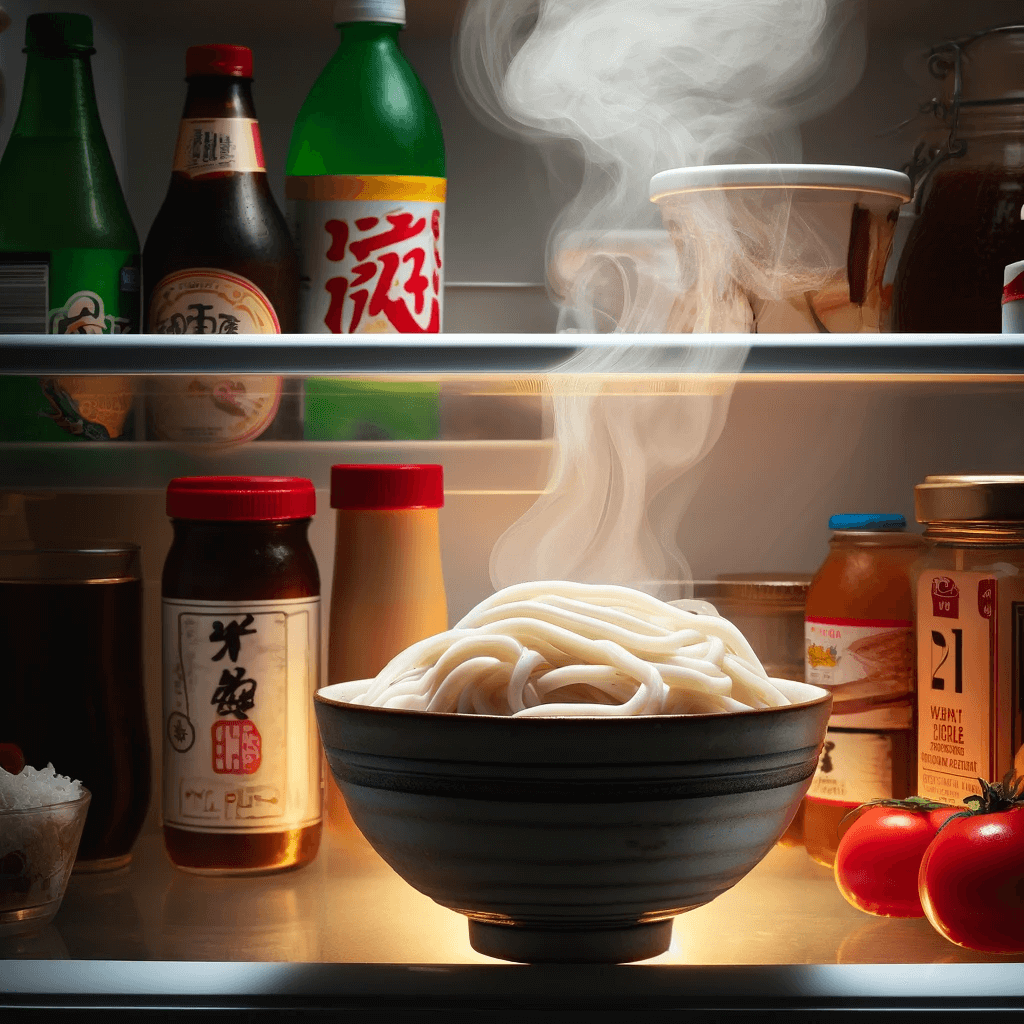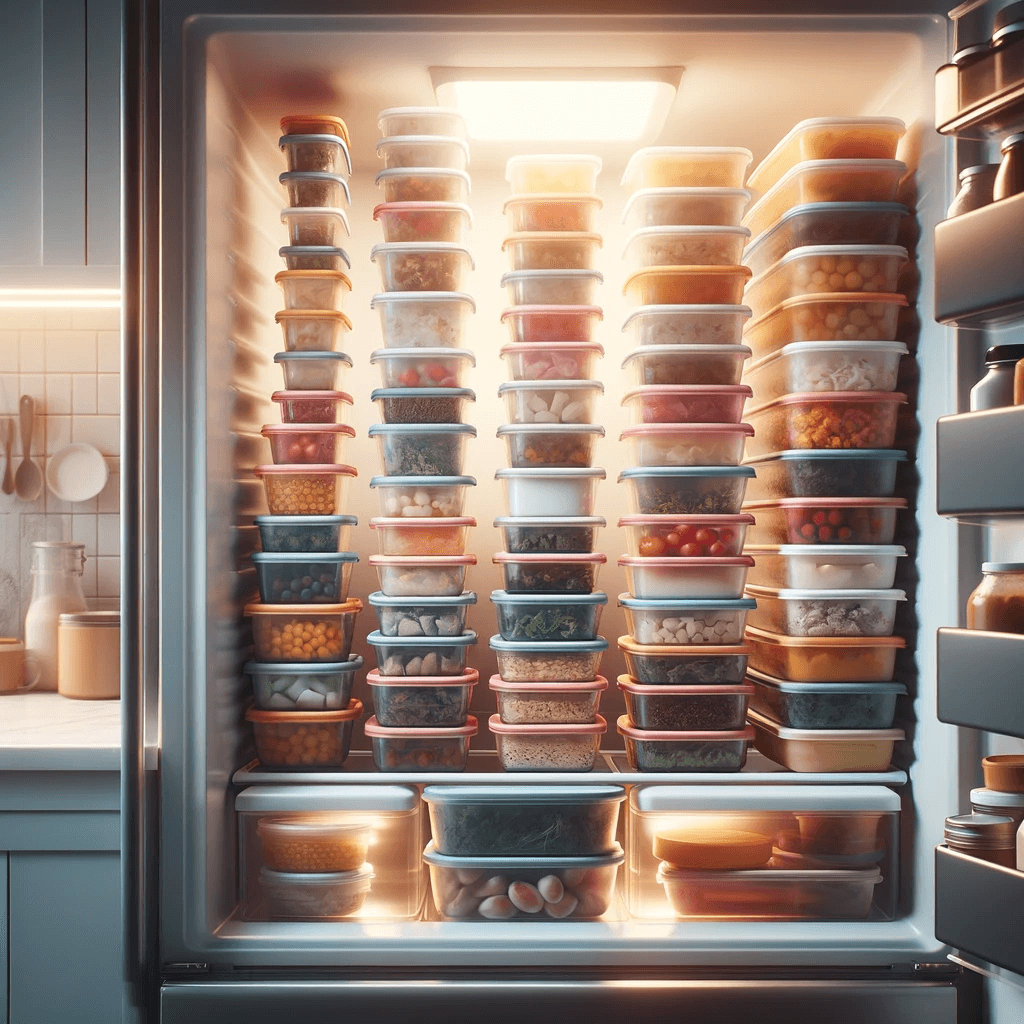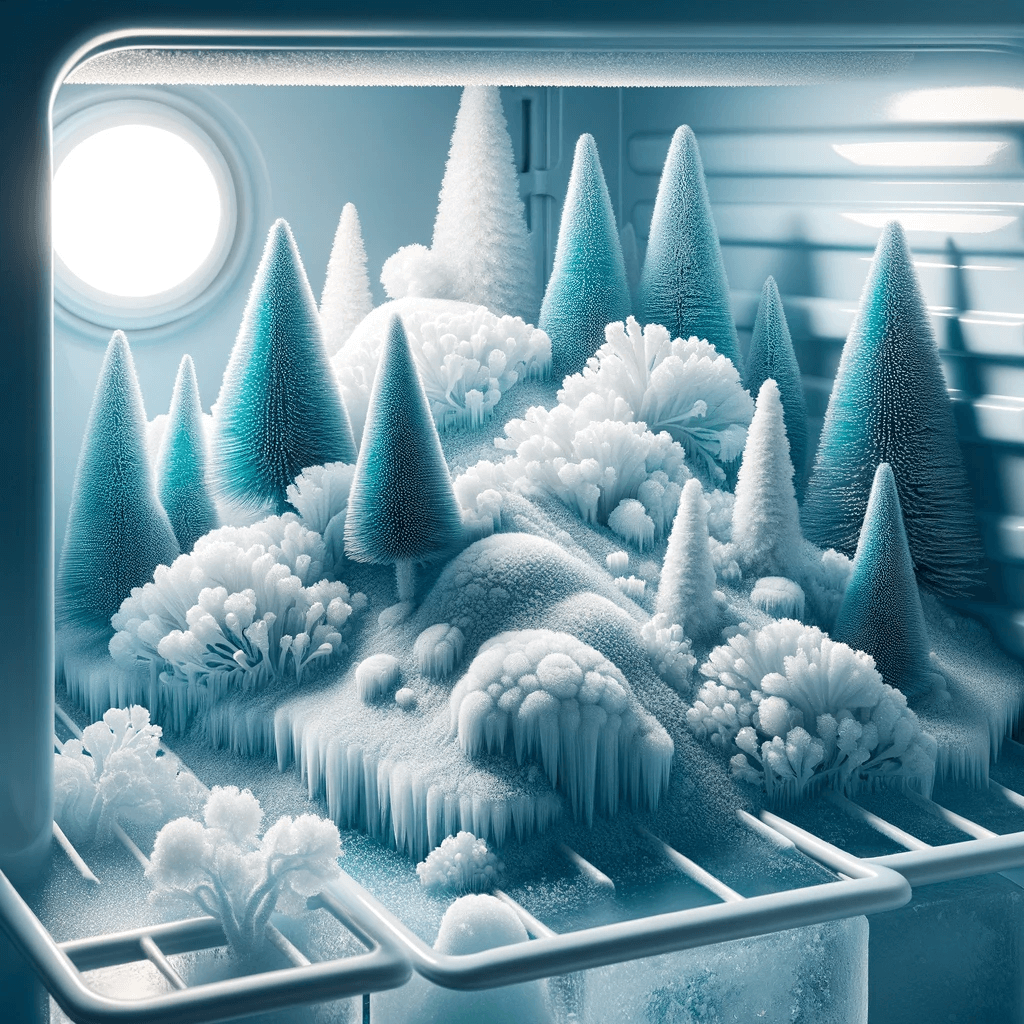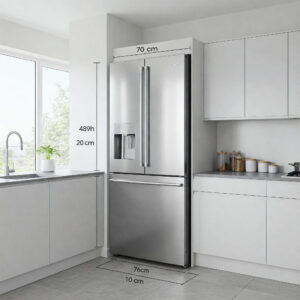Have you ever opened your freezer only to find a mini ice age inside? That thick layer of ice, known as freezer frosting, can be a major annoyance. Not only does it take up space and make it hard to reach for that ice cream at the back, but it also impacts your freezer’s performance. Let’s dive into the world of freezer frosting, understand why it happens, how it affects your refrigerator, and explore effective ways to prevent it. We’ll also touch on how modern technologies are stepping in to tackle this frosty issue.
- What is Freezer Frosting?
- Why Does Your Freezer Turn into a Mini Ice Age?
- How Does Freezer Frosting Mess with Your Refrigerator?
- Keep the Frost at Bay: Practical Tips
- Modern Tech That Prevents Freezer Frosting
- Conclusion
1. What is Freezer Frosting?
Freezer frosting is essentially the accumulation of ice that forms when moisture in the air inside your freezer condenses and then freezes. Think of it like the frost that forms on the ground on a chilly morning. In your freezer, this moisture comes from various sources: the food itself, the air that sweeps in each time you open the door, and potentially, from leaks if your freezer isn’t sealing properly.
2. Why Does Your Freezer Turn into a Mini Ice Age?
Several factors contribute to this frosty buildup:
Check the Door Seals
If your freezer’s door seals aren’t snug, warm, moist air will sneak in and turn into frost. Like all things, seals wear out or can warp out of shape.
The Door Opening
Every time you open the freezer door, you’re swapping some of the cold, dry air inside for warm, moist air from your kitchen. The more the door opens, the more frost forms.
Getting the Temperature Just Right
If your freezer’s set too cold, you’re inviting frost. Set it too warm, and your freezer works overtime, leading to thaw and refreeze cycles that also create frost.
Ensuring Good Air Flow
Your freezer needs to breathe! Poor ventilation can cause uneven temperatures inside your freezer, making some spots frostier than others.
Hot Food Alert
Placing hot food in your freezer raises the interior temperature and introduces more moisture—both frost friends.

3. How Does Freezer Frosting Mess with Your Refrigerator?
Freezer frosting does more than just build up ice; it impacts the overall functionality of your refrigerator:
It’s an Energy Hog
Frost buildup acts as an insulator on your freezer’s coils, making it harder for the appliance to maintain its cool and forcing it to run longer. This means higher energy bills for you.
Say Goodbye to Freshness
Temperature inconsistencies caused by frosting can lead to freezer burn on your food. This not only makes your food taste like cardboard but also diminishes its nutritional value.
Whirlpool provides detailed explanation of what is freezer burn and how to prevent it. You can refer to the link if you want to know more.
Endless Defrosting
More frost means you’ll find yourself defrosting the freezer more often, which is no one’s idea of a good time.
4. Keep the Frost at Bay: Practical Tips
Here’s how you can keep your freezer frost-free and functioning optimally:
Seal the Door
Regularly check your door seals for leaks and clean them with soapy water. Replace them if they look worse for wear.
Stay Organized
Keep your freezer neat so you can grab what you need quickly without letting out too much cold air. Also, avoid stuffing it to the brim; overcrowding blocks air vents.

Optimal Temperature
Aim for the sweet spot with your freezer’s temperature—around -17 to -15°C is generally best.
Cool Your Hot Food
Let hot foods cool to room temperature before they go into the freezer to cut down on moisture introduction.
Airtight The Containers
Using airtight containers or freezer bags can drastically reduce the amount of moisture that escapes from your food.
5. Modern Tech That Prevents Freezer Frosting
To combat freezer frosting, the latest frost-free freezers use a combo of fans and heating coils. The fans keep air moving evenly throughout the freezer, while the coils gently heat up to prevent ice from ever forming. These cycles are programmed based on general usage patterns and do not affect the overall temperature of your food. It’s a seamless process that operates in the background, requiring no input from the user and ensuring that the freezer remains frost-free.
Conclusion
While freezer frosting might seem like just another household annoyance, it’s actually a significant issue that can affect your freezer’s efficiency, your food’s quality, and your wallet. By understanding its causes and following our tips, you can keep your freezer clear of unwanted ice. And if you’re looking for a hassle-free solution, consider upgrading to a frost-free model. Remember, a little maintenance and the right technology can make a world of difference in your kitchen!
For more refrigerator problems, read our blog.
You May Also Like
- How to Choose the Right Refrigerator Size for Your Home?
- Why Is My Washing Machine Not Draining Water?
- Why You Should Deep Clean Your Washer Dryer Once a Year?
- Inverter or Non-Inverter Air Conditioner: Which To Buy?
- What is the Right Air Conditioner Horsepower for Your Home?
- 5 Tips to Buy an Air Conditioner in Malaysia








